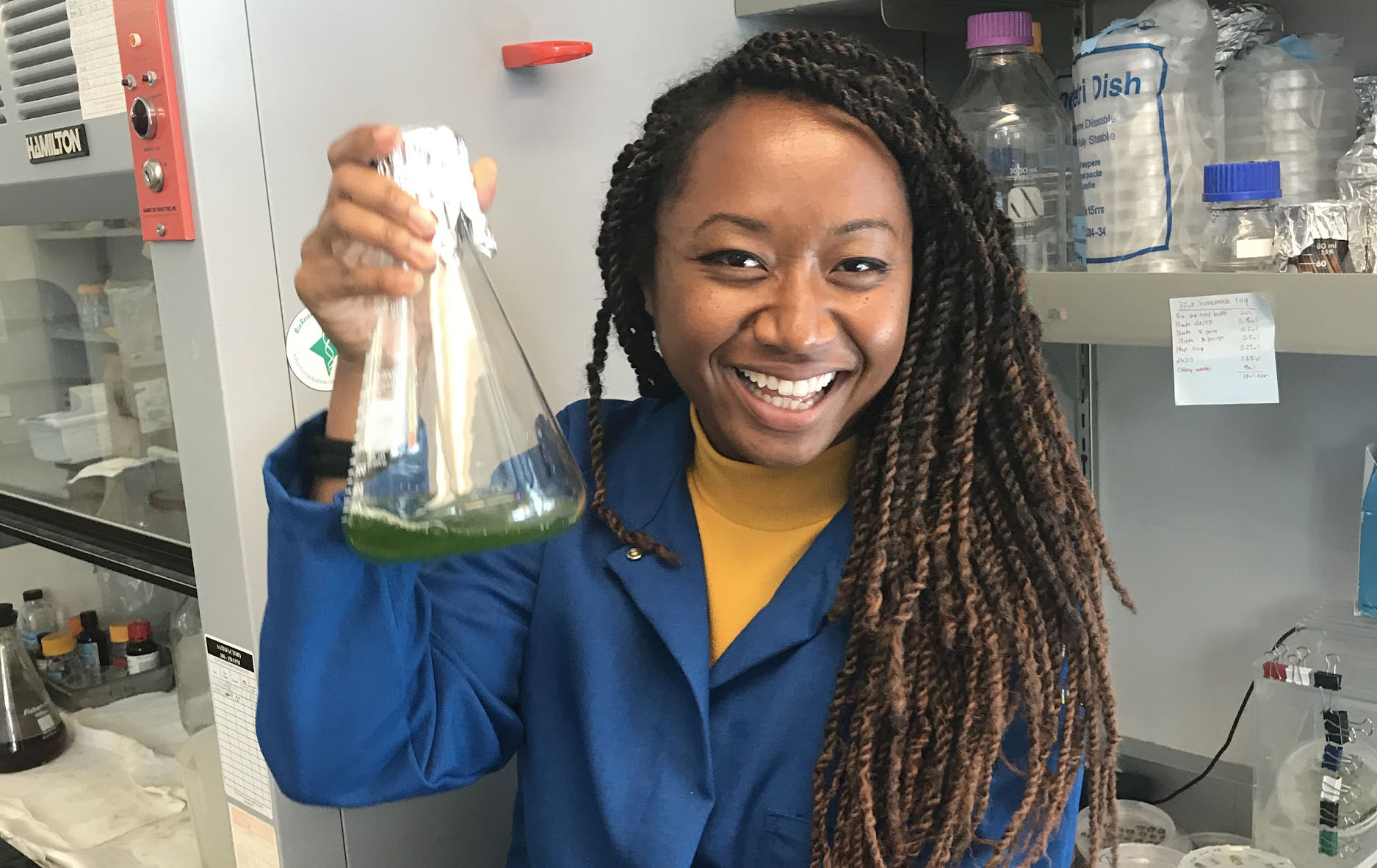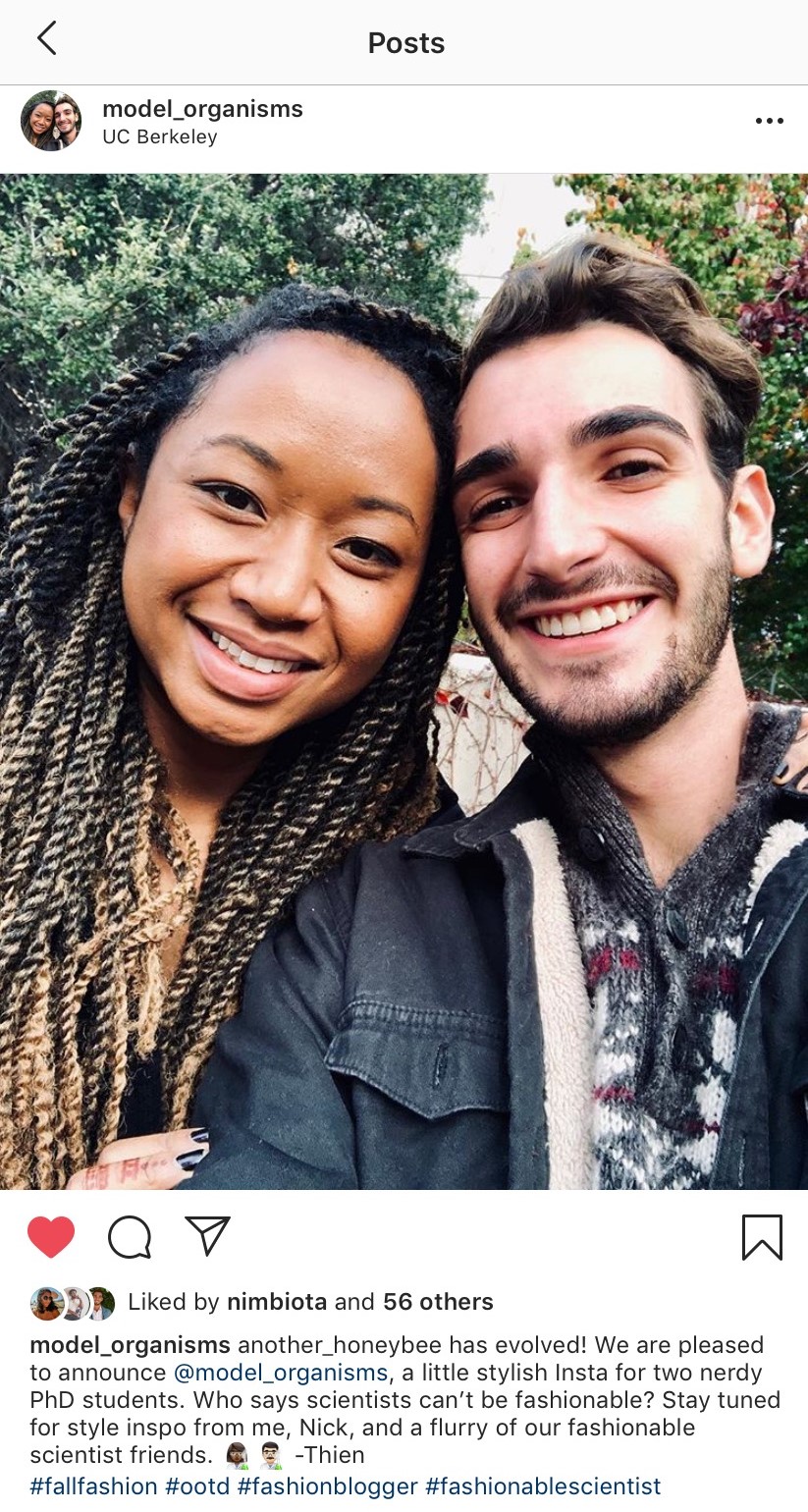3rd year PhD Candidate in Plant and Microbial Biology
In this month’s Student Spotlight, graduate student Thien Crisanto tells us about a non-linear path to science that cemented her love of mentoring and how her love of photosynthetic slugs led her to study algae.

What led you to graduate school?
My path to science was not linear. Out of high school I went to the Fashion Institute of Design and Merchandising, where I studied merchandise product development. After graduating with my associate’s degree, I worked for various companies as a visual merchandiser and a business consultant and designer, and I designed for my own clothing line.
My desire to continue learning and leave Southern California were major contributors to my transition into science. I found myself leaving my fashion career behind and working for Greenpeace, an environmental nonprofit organization. From there, I moved to San Luis Obispo and enrolled in community college as a biology major, and then transferred to Humboldt State University, where my passion for the intricacies of the molecular world flourished. I majored in cellular and molecular biology with a minor in botany.
I specifically chose to study microalgae and photosynthesis here at Berkeley because of my initial fascination with the theory of endosymbiosis. It was in general biology at Humboldt State where I was introduced to and initially intrigued by photosynthetic sea slugs, or sacoglossans, and I spent three years researching them as an undergraduate student. Eventually I would do research on only the macro algae that they ate, which helped me transition into the field of molecular biology and photosynthesis on microalgae.
Are there any parallels between fashion design and science?
In fashion design, you spend a lot of time conceptualizing intangible ideas before turning them into something visual and tangible. That’s why a lot of fashion designers have mood boards that encompass a general theme, before even doing any kind of planning about what kind of product they want to create. This kind of careful planning requires a lot of spatial visualization—also a valuable skill for scientific research, especially in molecular biology. So much of what I research is too small to visualize by the naked eye, so I spend a lot of my time conceptualizing chemical reactions and metabolic processes in my head to help me make conclusions about what to do next.

In addition to that, fashion design and scientific research have similar workday patterns. In both fields, a lot of individual work you do functions as part of a larger team. With fashion you are typically designing one subset of a line, say handbags, while working in tandem with graphic designers, marketers, vendors, etc. In scientific research you are a part of a subset of a team too, working on one specific project, organism, or genes, while contributing to the general goal of the lab.
Combining my fashion interests with my current life, I also started an Instagram called Model Organisms with my friend Nicholas Karavolias to help the world see scientists as real people. Scientists are often perceived as geeks who sit inside in lab coats and goggles all day, but that's really not the case. Model Organisms shows that scientists can be fashionable while being lab safe, have hobbies outside of science, and are more than just a lab coat behind a bench.
What’s the focus of your doctoral research here at Berkeley?
I am a PhD candidate in Krishna Niyogi’s Lab. Graduate students in the Niyogi lab generally work on understanding how photosynthetic energy conversion works, how it is regulated, and how it might be improved to help meet the world’s needs for food and fuel.
I work on a microalga called Nannochloropsis oceanica that is used as a potential feedstock for biofuel production. My dissertation involves altering the efficiency of photosynthesis in order to divert more light energy into carbon rich molecules. To do this, I am identifying new components—such as proteins, genes, and molecular players—involved in naturally occuring energy dissipation, or non-photochemical quenching (NPQ). By altering the components involved in NPQ, I am able to divert more energy towards the utilization of light energy for the production biofuel precursors.

What positions do you hold outside of your laboratory work?
Because my path to science was so non-linear, I think it’s valuable to help provide infrastructure to guide the next generation into science. If that guidance looks like providing high-school students with examples of people to look up to, or advising undergraduate students on their next steps into professional science, or speaking to younger graduate students about their journeys through graduate school, I deeply believe in it.
I hold several mentoring positions, including serving as a peer advisor to graduate students in the Department of Plant and Microbial Biology. I also mentor undergraduates in the College of Letters and Science, focusing specifically on connecting with STEM and underrepresented minority students.
I am also a graduate assistant for this summer’s National Science Foundation Research Experience for Undergraduates at UC Berkeley, which serves 10 undergraduate students around the nation in multiple disciplines across biology, giving them hands-on laboratory experience. In this position, I conduct one-on-one mentoring sessions with students and hold bi-weekly professional development workshops.
Do you know of a student or group in Rausser College involved in noteworthy research, community outreach, or extracurricular activities? Let us know by submitting a suggestion with this nomination form.
